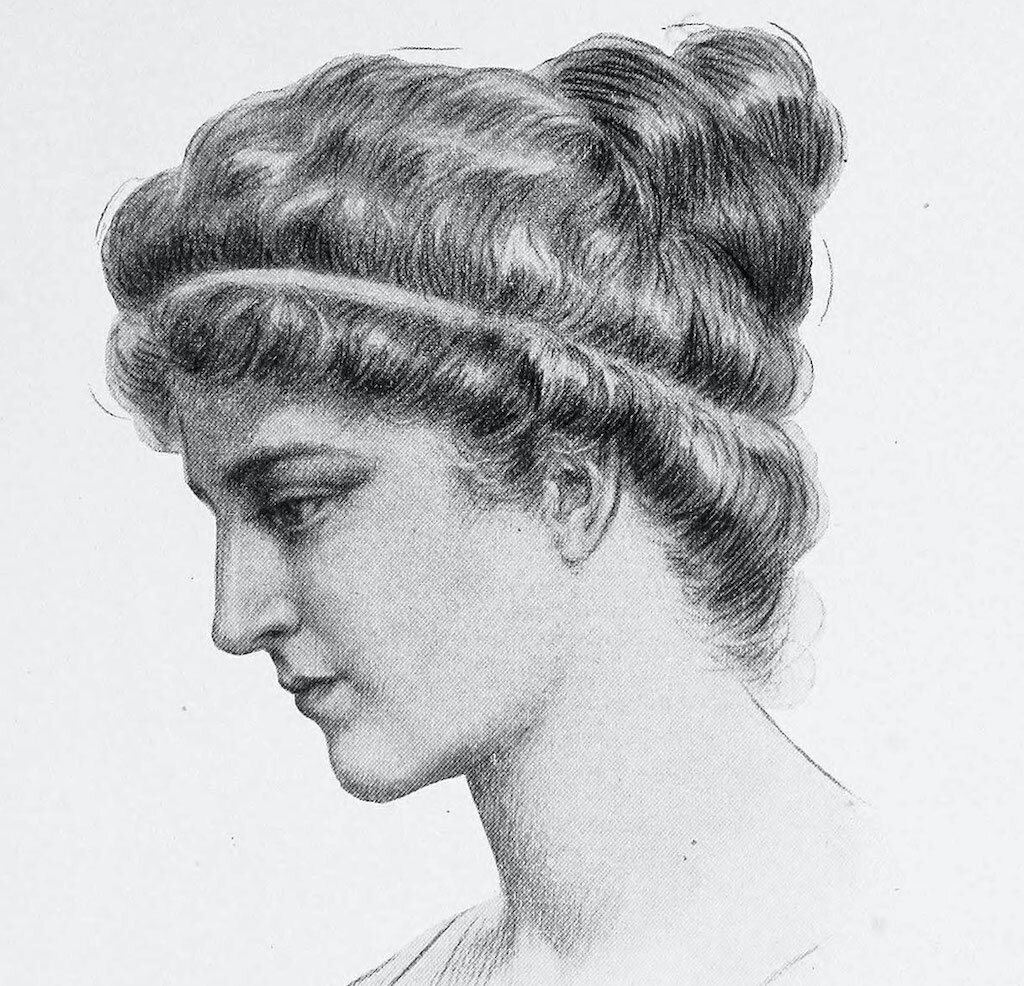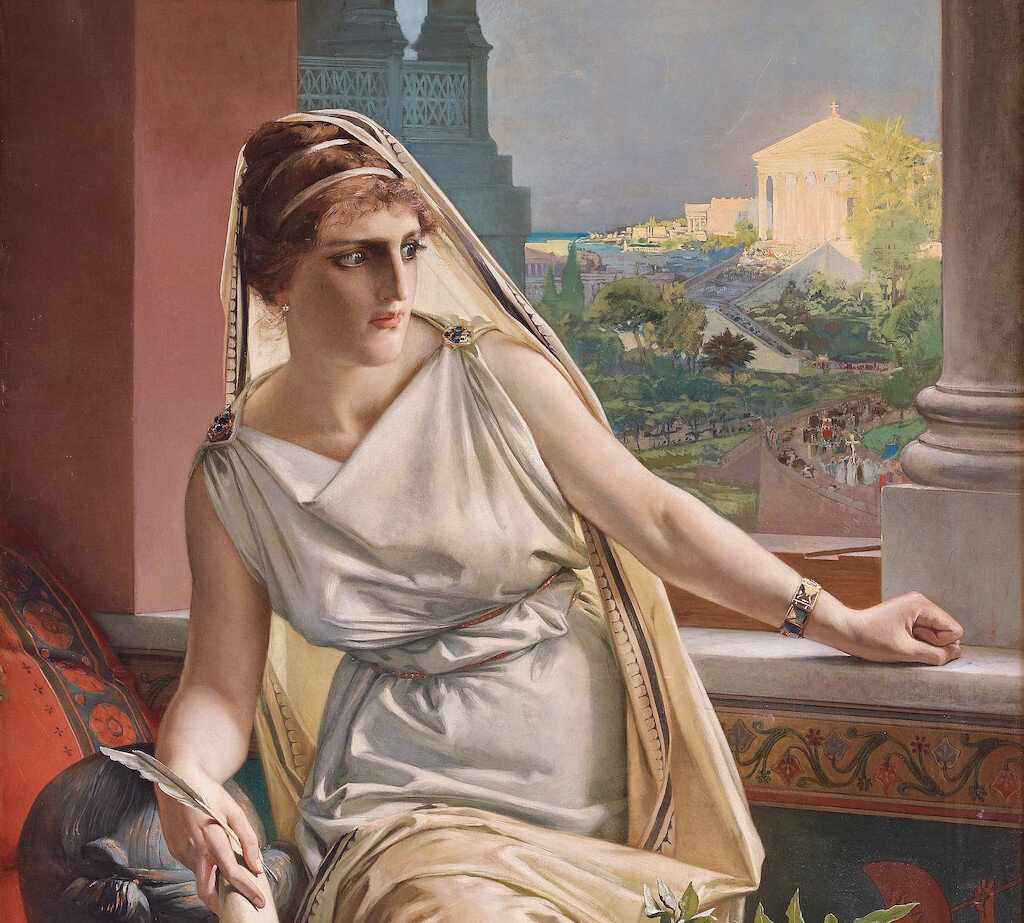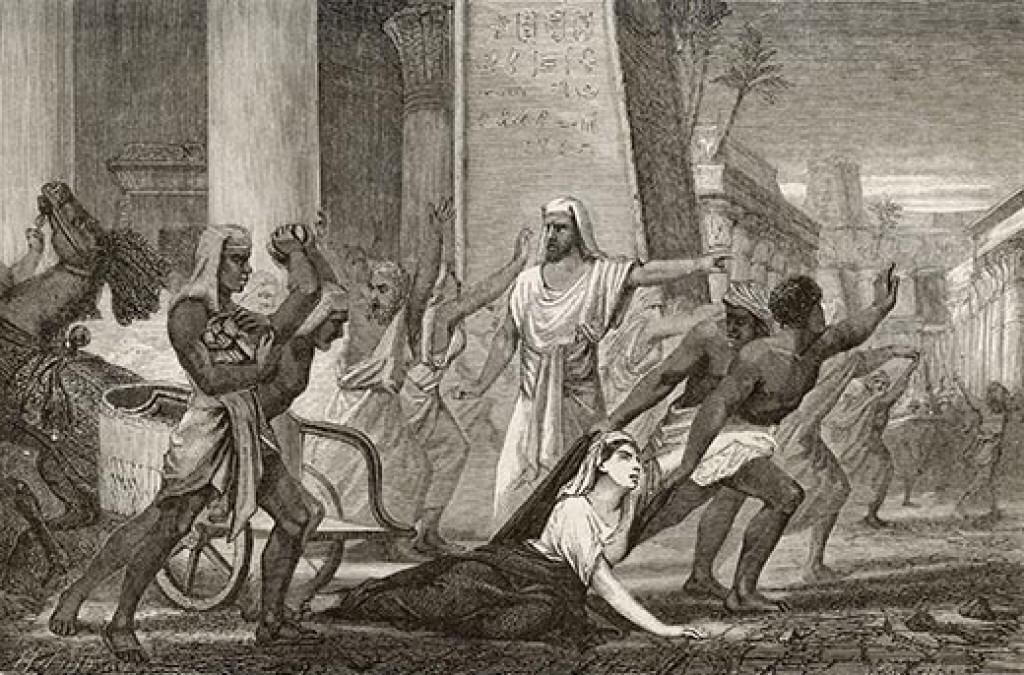Hypatia of Alexandria was the first known woman scientist and the last famous Neoplatonist philosopher of Alexandria, Egypt. The first woman of ancient times who achieved widespread and lasting fame for her intellectual accomplishments died a horrifying death around the year 415. Other women of ancient times gained fame for things other than science. But according to historians, she was the first female scientist.

Women were capable of scientific achievement, of course, but women did not receive the education and opportunities men got then. Therefore, women did not play the role of the intellectual in society. Hypatia was well-known to the public and taught many people about philosophy, math, and astronomy.
Beginning of the Dark Ages
The Old World teetered on the cusp of the Dark Ages beginning in the 5th century A.D. in the face of oncoming barbarian hordes and the Roman Empire’s splintering and disintegration. At the time, a horrendous crime and tragedy occurred: Around 415, a mob of Christians brutally murdered her over a disagreement she had with the Christian bishop of Alexandria.
The crowd stripped the clothing off of Hypatia, dragged her into a church, and beat her to death with roofing tiles, or, as another story says, scraped her flesh off with oyster shells. The altar and crucifix of the church became splattered with blood. The mob of 500, by some accounts monks, tore apart her body and burned it.
Martyr for Philosophy
She has been called a martyr for philosophy, and a hero to feminists and women in general. She is a heroine to modern pagans. Atheists, too, respect her, even though she believed in a divine First Cause that she and people in her school of Neoplatonism would call the One, the First, or the Good. Neoplatonists believed that everything we see and know emanated from the Good.
Neoplatonism synthesized the teachings of a thousand years of ancient Greek and Roman thinkers into a new system of thought.
According to the Stanford Encyclopedia of Philosophy entry on Neoplatonism:
[blockquote align=”none” author=”Stanford Encyclopedia of Philosophy”]The result of this effort was a grandiose and powerfully persuasive system of thought that reflected upon a millennium of intellectual culture and brought the scientific and moral theories of Plato, Aristotle, and the ethics of the Stoics into fruitful dialogue with literature, myth, and religious practice. In virtue of their inherent respect for the writings of many of their predecessors, the Neoplatonists together offered a kind of meta-discourse and reflection on the sum-total of ideas produced over centuries of sustained inquiry into the human condition.[/blockquote]
Hypatia of Alexandria Surpasses Her Famous Father
She surpassed her father, Theon, in fame and accomplishments. He was a mathematician and philosopher who taught at the university at Alexandria, which was also a museum and a library (not the more famous and larger one that burned centuries earlier).

Her birth date is in dispute but believed to be between 350 to 370 A.D. Theon raised her to be an intellectual. He taught her astronomy and mathematics. He also put her through rigorous physical training. Hypatia visited Greece and Rome to study.
Related: History of the Ancient Library of Alexandria
After she established herself, in the ancient tradition she taught anyone who asked her about the philosophies of thinkers who came before. In the town center of Alexandria, which was in the Eastern Roman Empire, if someone stopped her and inquired about philosophy, she held forth. She also conducted formal lectures at the university that were popular.
A Powerful Enemy
She lived during an intellectual, religious, and cultural crossroads, near the end of the pagan era and the beginning of the Christian era. As a prominent pagan in a city rapidly converting to Christianity, she gained the displeasure of Bishop Cyril of Alexandria by befriending the prefect Orestes. Because of that, Cyril thought she kept Orestes, a pagan and the governor of Egypt, from converting to Christianity.

Whether Cyril played a role in her unfortunate death is not recorded. But the group that murdered her was aware that Cyril viewed Hypatia with displeasure. The violent mob took its leadership from Peter the Lector, the right-hand man of Cyril.
Cyril Burns the University
Cyril later ordered the University or Museion of Alexandria, to which Hypatia and her father were closely tied, burned and the city’s pagan temples destroyed. Consequently, artists and intellectuals of Alexandria fled the city. Sadly, most of her written works and commentaries burned in the fire.
You May Also Like: Apollonius of Tyana Similarities to Jesus
The church later declared Cyril a saint for suppressing paganism and named him a “Pillar of Faith.” The council of Nestorian bishops at Ephesus in 431, however, called him a “monster, born and educated for the destruction of the Catholic Church.”
Many of Hypatia’s students were Christian. They must have been overcome with horror and grief at what happened to her that day. One of her students, Synesius, became a Christian bishop and taught Neoplatonic principles, incorporating into them the Christian doctrine of the Holy Trinity of God the Father, the Son, and Holy Spirit.
Life and Style
Hypatia of Alexandria was single and celibate her entire life. The reason for her celibacy is unknown. But it may have been in keeping with Plato’s advocacy of abolishing the system of family.
She traveled in a chariot and dressed in scholars’ robes, unlike how other women behaved then. Reports stated she was physically beautiful. She had a reputation for being generous and a lifelong lover of learning.
“A person who has done a good act does not call out for others to come and see. But goes on to another act, as a vine goes on to produce again the grapes in season.”
As for her works, some credit her with inventing the plane astrolabe, an instrument used in navigation. Furthermore, she is credited for inventing the graduated brass hydrometer that scientists used to ascertain the relative density of liquids and the hydroscope that allowed people to view underwater. Synesius, her student who became a bishop, said she invented a device to distill water. She may have done some of this in collaboration with Theon, whose works she edited.
Hypatia of Alexandria also wrote mathematical texts of her own and wrote commentaries on other prominent mathematicians’ works.
A Changed World
A summary of the book, written by Maria Dzielska, states:
[blockquote align=”none” author=”Maria Dzielska”]Historians and poets, Victorian novelists and contemporary feminists have seen Hypatia as a symbol—of the waning of classical culture and freedom of inquiry, of the rise of fanatical Christianity, or of sexual freedom.[/blockquote]
Ms. Dzielska attempts to set the record straight in the book. However, we will never know if the ascendance and fame of the female scholar. She would have helped other women to be scientists in ancient times. Patriarchal society kept women in less scholarly roles until the early and even mid-20th century.
On Amazon: Link to Maria Dzielska’s book.
News of her brutal murder appalled many people. Even Christian writers who were antagonistic to her and called her a witch described her death as a tragedy.